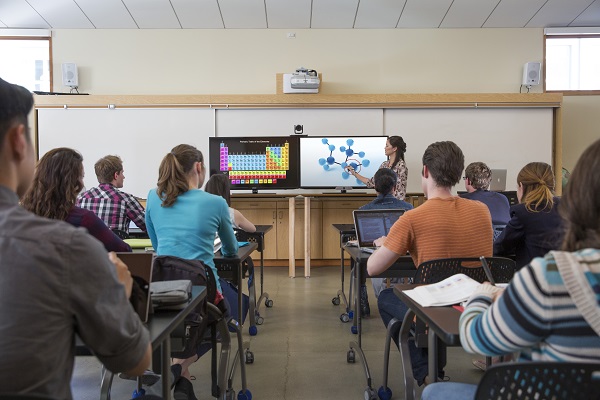What’s on the horizon for educational technology?

With curriculum planning complete for the start of the school year, technology and the role it’s expected to play is high on the agenda for New Zealand educators.
The impact of New Zealand’s ultra-fast broadband (UFB), now available in 97 per cent of schools, is evident as teachers and students continue to discover new learning possibilities enabled by technology. But while change is exciting, there are still significant challenges to be addressed.
The latest Programme for International Student Assessment (PISA) 2015 revealed that, although there have been positive gains within the New Zealand education system in areas such as science, more work is needed to address New Zealand’s education inequity.
Polycom also recently undertook its own Education 2025 study within Australia and New Zealand to gain insights into technology needs within the education sector. The results told us that educators want more professional development around using new technologies. It also found that funding, the curriculum not keeping pace with future workforce needs and the lack of government support, were all seen as inhibitors to creating a more positive education future.
As we know, schools and colleges are under increasing pressure to deliver technology-enhanced learning. Here is what we can expect to see more of during the next 12 months:
Virtual reality
Delivering deeper engagement than a traditional textbook, virtual reality inside the classroom promotes content-rich learning and social interaction. It provides context in learning because the visual element of virtual reality enhances the relationships between concepts and information much better than reading alone. Tools such as Google Cardboard are both a platform and a product to experience and encourage interest in virtual reality.
Augmented reality
Witness the cult-like popularity of Pokémon Go. Augmented reality, which superimposes digital content including hologram images onto a user’s view of what they see is still relatively new. Unlike virtual reality, it allows the user to ‘maintain control’ of their environment by seeing the real world around them. Improvements in the performance and cost of solutions will help drive this technology into the mainstream.
‘Learn from anywhere, teach from anywhere’ mobile devices
While smart devices like tablets and smartphones are not new in themselves, they continue to gain in popularity as learning tools for students and educators. Offering ‘learn from anywhere’ accessibility, smart devices are also expected to play a significant role in bridging the education inequalities highlighted by PISA. However, the flip side to widespread availability is increased user familiarity and therefore a higher expectation of
Collaboration technology
Improvements in equity of access to ultra-fast broadband and HD video is enabling remote-based students to receive the same education as their city-based peers. Having access to ultra HD 4k video content inside and outside the classroom is also expected to become a popular way for students to engage with content, experts and each other.
Gamification
Popular games like Minecraft are teaching creativity, collaboration and problem solving. Gamification of learning is an educational approach to motivate students, bringing game design and elements into the learning environment. For example, gaming accessories like Osmo convert any iPad into a learning device that enables children to discover and explore a wide range of subjects from mathematics to coding, art instruction to critical thinking.
Coding
Learning coding skills helps children to develop critical thinking skills and problem-solving processes that are not only important in computer science, but also in life. Teaching them how to look at the bigger picture, and to break down big challenges into smaller and more manageable tasks. More emphasis is expected on areas like coding and programming to ensure students understand how to program and interact with technology.
Evolving learning spaces and styles
Using a mix of cloud, mobile and desktop collaboration apps is already common in technology enabled schools. Tomorrow’s technology needs the flexibility to meet the demands of different learning styles and collaboration requirements ranging from personal and group learning through to idea generation and teacher training. Traditional physical learning spaces will be transformed to accommodate the needs of technology and learning preferences. A video-enabled classroom must accommodate the needs of the children physically present in addition to those joining from remote locations.
The maker movement
This refers to the students who will be the creators and inventors of tomorrow. The availability of ‘maker tools’ such as 3D printers and Raspberry Pi motherboards is playing a key role in driving this movement. It allows children to take what they’ve learned at school and test their theories by making prototypes or real-life models of their vision. The maker movement also supports critical thinking during the creation phase – sequence of production actions, work-flow and failure! Learning to fail and earning from failing is important to children.






